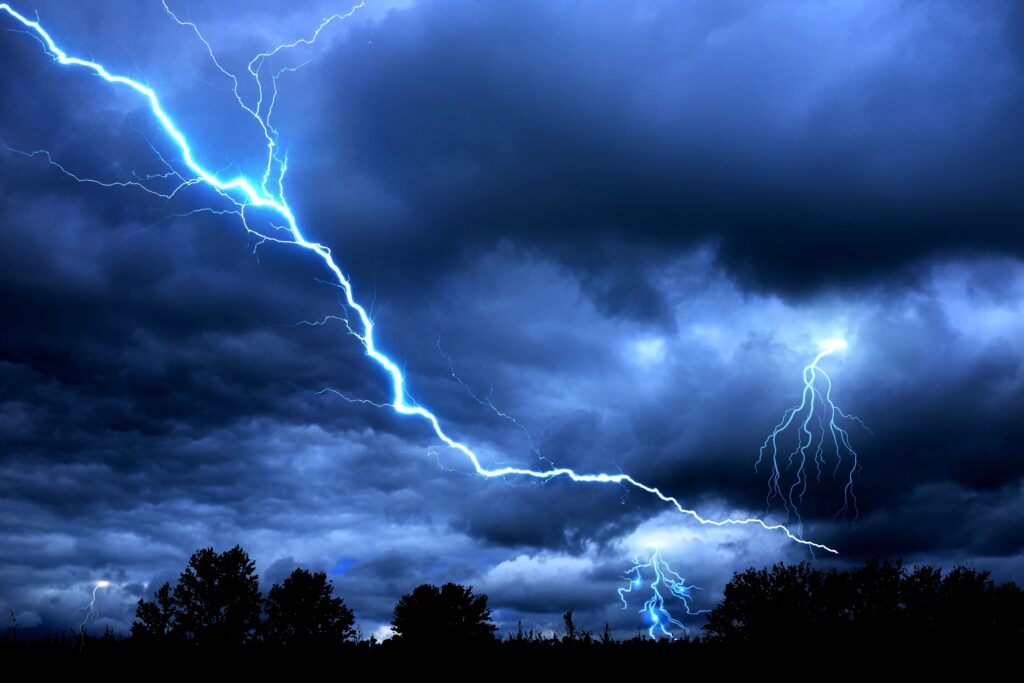
Lightning is one of nature’s most powerful and fascinating electrical phenomena. Every year, millions of lightning strikes hit the Earth, creating spectacular displays of light while also posing serious risks to people, animals and infrastructure. Understanding how lightning forms and how to stay safe during thunderstorms is essential for everyone.
What Causes Lightning
Lightning occurs when electrical charges build up in a cloud. Inside a storm cloud, ice particles collide and create positive and negative charges. The top of the cloud becomes positively charged while the bottom becomes negatively charged. When the difference between these charges becomes too great, electricity discharges in the form of a bright flash known as lightning.
Lightning can strike within the cloud, between clouds or between the cloud and the ground. Cloud to ground lightning is the type that most often affects humans and property.
Different Types of Lightning
- Cloud to Ground Lightning
This is the most dangerous type since it directly reaches the Earth’s surface. It often appears as a bright white or blue flash. - Intra Cloud Lightning
This happens inside a single cloud and is the most common type. It lights up the sky but usually does not hit the ground. - Cloud to Cloud Lightning
This occurs when charges move between two separate clouds. - Sheet Lightning
This is lightning that occurs within clouds and appears as a bright flicker that lights up the sky.
Why Lightning Is Dangerous
Lightning can reach temperatures hotter than the surface of the sun for a fraction of a second. A single strike carries millions of volts of electricity. These extreme levels of energy can:
- Cause fires and explosions
- Damage buildings, vehicles and electrical equipment
- Cause serious injuries or death to people and animals
- Disrupt communications and power networks
Although the chances of being struck by lightning are low, the consequences are severe enough that safety precautions are crucial.
Lightning Safety Tips
Stay Indoors During Storms
The safest place during a thunderstorm is inside a sturdy building. Avoid touching electrical appliances, water pipes or metal objects.
Avoid Open Spaces
If you are outdoors and hear thunder, seek shelter immediately. Open fields, beaches and hilltops are extremely dangerous.
Stay Away from Tall Objects
Trees, poles and towers attract lightning. Avoid standing near them during a storm.
If You Are in a Vehicle
Stay inside with the windows closed. Cars act as a protective shield that redirects electrical currents to the ground.
Follow the 30-30 Rule
If you see lightning and hear thunder within 30 seconds, move to safety. Wait at least 30 minutes after the last thunder before going outside.
The Beauty and Power of Lightning
Despite its danger, lightning remains one of the most breathtaking natural events. Photographers and weather enthusiasts often admire its dramatic appearance. The sound of thunder following a bright flash creates a sense of awe that reminds us of the raw power of nature.
Lightning also plays an important environmental role. It helps maintain the Earth’s electrical balance and even contributes to the formation of nitrogen compounds that nourish plants.
Conclusion
Lightning is both beautiful and dangerous. Understanding how it forms and how to stay safe during storms can significantly reduce the risk of harm. By respecting nature’s power and following proper safety guidelines, you can enjoy the wonder of lightning while keeping yourself and others safe.


